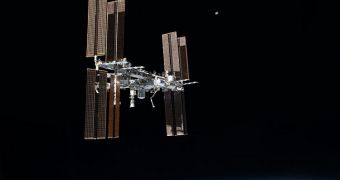Later this year, in October, the International Space Station (ISS) will jettison a series of five Cubesats into orbit around the planet. The event will be broadcast live, and will be witnessed by both project engineers and interested student interns.
One of the Cubesats was developed by engineers at the NASA Ames Research Center (ARC), in Moffett Field, California. The team is prepared to support the orbital insertion process from the ground, and interns at ARC will get a unique chance to see this rare process in action.
Cubesats are very small satellites, weighing less than 2 pounds (1 kilogram) each, which come in the shape of 10-centimeter cubes. Though a lot smaller than regular satellites, they can fit a lot of instruments onto their buses, thanks to advancements in miniaturization technologies.
The ARC Cubesat is called TechEdSat, and was developed in collaboration with the San Jose State University (SJSU), the Japan Aerospace Exploration Agency (JAXA), and Uppsala, Sweden-based AAC Microtec, representing the Swedish National Space Board (SNSB).
According to scientists, the small vehicle is not yet aboard the ISS. It will launch in space, alongside the other four Cubesats, aboard the third JAXA H-II Transfer Vehicle (HTV-3). The robotic capsule will also carry supplies for the station's crew, as well as other experiments.
JAXA says that HTV-3 is currently scheduled to take off at 7:06 pm PDT on Friday, July 20 (0206 GMT, July 21), from the Tanegashima Space Center, in southern Japan. The capsule will be captured and attached to the ISS via the Canadarm-2 robotic arm.
TechEdSat will be jettisoned into space by the newly-built Japanese Exploration Module-Small Satellite Orbital Deployer, an instrument attached to the outer hull of the orbital research facility.
“TechEdSat will evaluate the plug-and-play technologies, like avionics designed by commercial providers, and will allow a group of very talented aerospace engineering students from San Jose State University to experience a spaceflight project from formulation through decommission of a small spacecraft.” Andres Martinez explains.
The expert holds an appointment as the program manager for Small Spacecraft Payloads and Technologies at NASA ARC.

 14 DAY TRIAL //
14 DAY TRIAL //